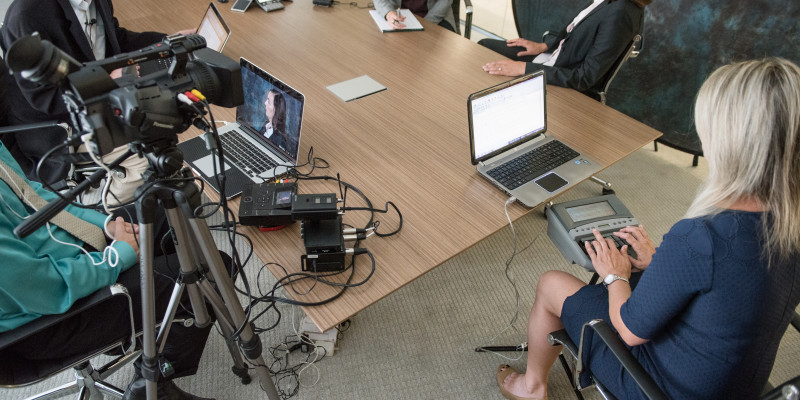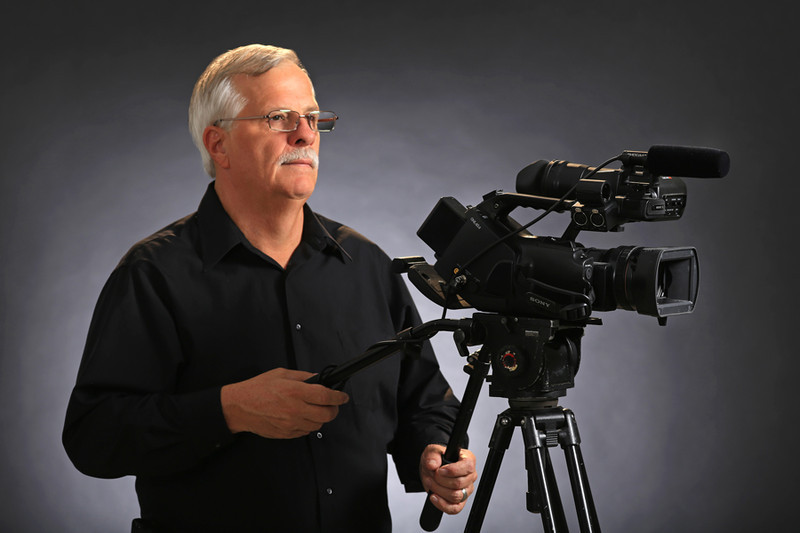Advanced Legal Videography Options for Legal Professionals.
Why Lawful Videography Is Crucial for Accurate Legal Record-Keeping
In the realm of lawful proceedings, the accuracy of record-keeping is extremely important, and legal videography emerges as an essential tool in this context. By catching the subtleties of spoken and non-verbal communication, it considerably lowers the potential for false impression that can accompany standard written documents. The preservation of authentic visual evidence not only improves the integrity of testaments yet also contributes to a comprehensive account of events. As we explore the diverse advantages of legal videography, one should consider its ramifications for the future of judicial stability and openness - legal videography.
Value of Visual Evidence
Establishing the significance of visual evidence in legal proceedings is critical for ensuring exact record-keeping and boosting the general stability of the judicial process. Visual proof offers as a crucial tool in documenting events, problems, and various other significant information that might be necessary to a situation. Unlike composed accounts, which are prone to interpretation and predisposition, visual recordings offer a goal, unalterable representation of facts as they occurred.


This kind of evidence can capture a selection of aspects, including witness habits, environmental context, and physical evidence, every one of which may influence judicial results. By presenting a clear and extensive aesthetic story, lawful videography removes uncertainty and aids to protect the credibility of the evidence.
In addition, visual evidence can be crucial in reducing conflicts over valid discrepancies, as it permits a straight contrast against statement and various other recorded records. In an age where electronic modern technology is progressively common, the capacity to present visual proof effectively can dramatically enhance the overall high quality of lawful process. Ultimately, the unification of visual evidence not just strengthens the documentation process but additionally reinforces public rely on the judicial system by promoting openness and accountability.
Enhancing Statement Trustworthiness
The assimilation of legal videography into courtroom process dramatically boosts the reputation of witness testament. By catching the nuances of verbal and non-verbal communication, video clip recordings give an even more detailed representation of a witness's behavior, emotions, and integrity. This aesthetic paperwork enables jurors to observe the witness's body language, face expressions, and total manner, which are crucial parts that can affect their understanding of statement reliability.
Furthermore, lawful videography lowers the possibility for misinterpretation or distortion of testimony that may occur in created records. Audiences can see and listen to the testament as it existed, ensuring that the context and tone are protected. This credibility promotes a better sense of trust fund amongst jurors, that may be extra inclined to believe testament that they can witness firsthand.
Additionally, the presence of video clip footage can prevent witnesses from giving deceptive or overstated declarations, as they understand that their testimony is being tape-recorded. This accountability strengthens the stability of the judicial process. Inevitably, legal videography acts as a vital device in ensuring that witness testament is not only accurately illustrated however additionally viewed with heightened trustworthiness by all events involved.
Comprehensive Document Conservation
Comprehensive record preservation is necessary for keeping the stability of lawful proceedings. Lawful videography functions as a critical tool in this procedure, offering an exact aesthetic and acoustic account of testimonies, depositions, and various other zero hours in a situation. Unlike conventional written records, video clip recordings capture the nuances of body language, tone, and feeling, which are important for understanding the context and intent behind declarations made throughout lawful procedures.

In addition, the ability to review video clip evidence allows lawyers to recognize critical details that might have been overlooked in created records. By keeping a detailed archive of legal process through videography, law office can promote the highest possible criteria of precision and accountability, ultimately adding to a fairer judicial procedure.
Improving Legal Procedures
Improving lawful proceedings is vital for enhancing efficiency and reducing delays within the judicial system. Legal videography functions as a critical tool in accomplishing this goal by supplying clear and exact visual paperwork of court hearings, depositions, and statements. This innovation permits real-time recording, making certain that all spoken and non-verbal hints are caught, which can assist in quicker resolution of disagreements.
The assimilation of videography right into lawful procedures lessens dependence on standard methods, such as lengthy transcripts, which can be time-consuming to produce and evaluate. By having accessibility to videotaped footage, attorneys can promptly reference essential moments, improving their capability to prepare and present cases efficiently. This immediacy additionally helps in the making clear of statements, reducing the capacity for misconception.
In addition, aesthetic documents promotes a much more appealing court experience for jurors, helping them to comprehend intricate info a lot more easily. Eventually, legal videography enhances communication among all parties involved, from attorneys to judges to jurors, consequently promoting a more effective judicial process (legal videography). In an era where time is essential, welcoming this modern technology is crucial for the contemporary legal landscape
Admissibility in Court
Accurate documentation is important not just for efficiency but likewise for ensuring that evidence is acceptable in court. Legal videography offers as a crucial tool in this process, providing a trusted visual record of statements, declarations, and events.
To be deemed permissible, legal videography has to follow well-known procedures, such as correct equipment use, proper lights, and clear audio capture. In addition, it is important to have qualified videographers who comprehend the lawful requirements bordering evidence collection. The chain of custodianship must also be kept to stop any kind of check claims of tampering or alteration.
Furthermore, legal videography can boost the persuasiveness of evidence by giving jurors with a direct view of the testimony, permitting a much more engaged understanding of the situation. In recap, the integration of lawful videography into record-keeping not just sustains efficiency but additionally strengthens the stability and admissibility of evidence in court procedures.
Verdict
In verdict, lawful videography plays a critical role in making certain accurate legal record-keeping by giving objective visual documentation. Inevitably, the incorporation of legal videography into the judicial procedure promotes openness and bolsters public depend on in the integrity view publisher site of the lawful system.